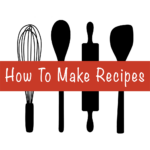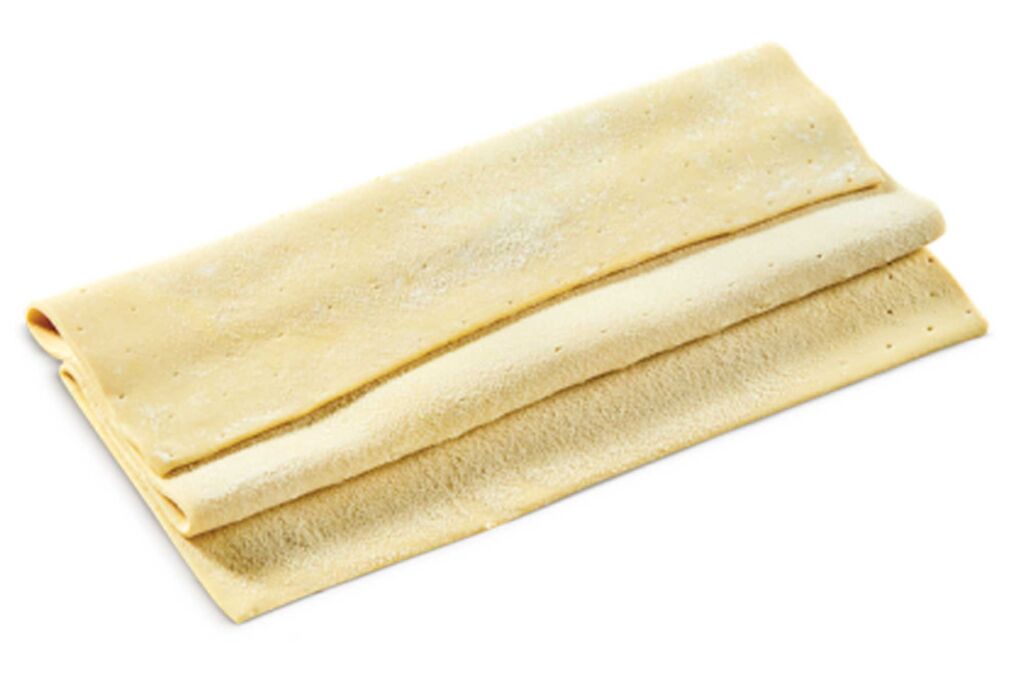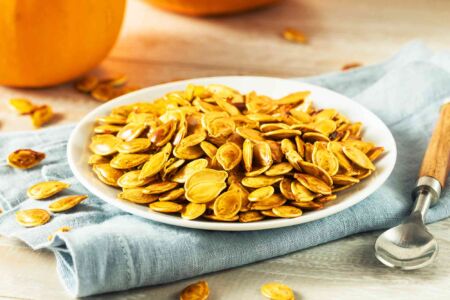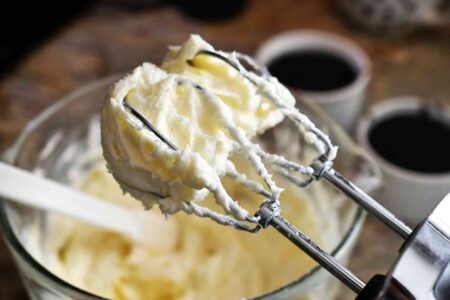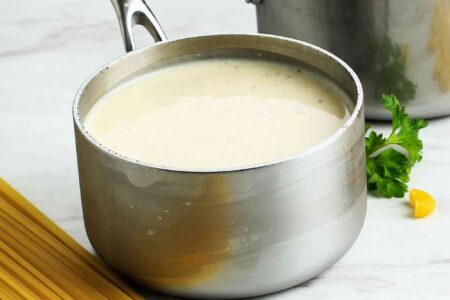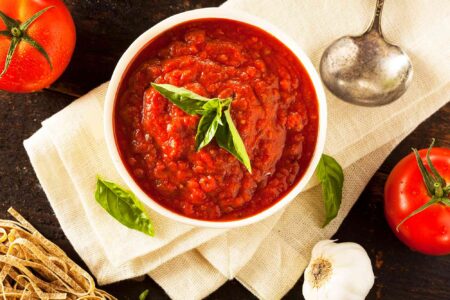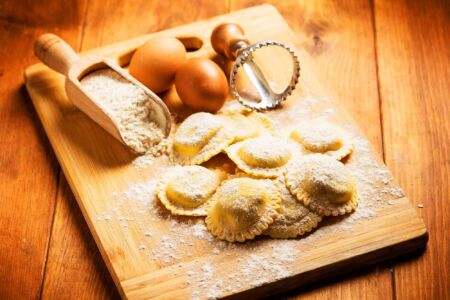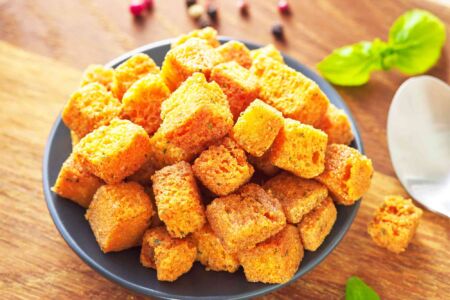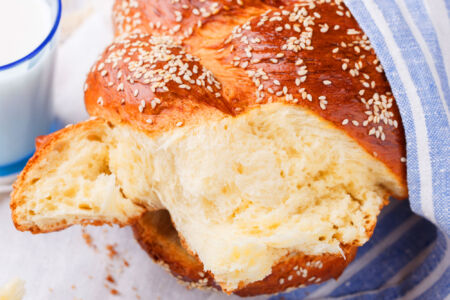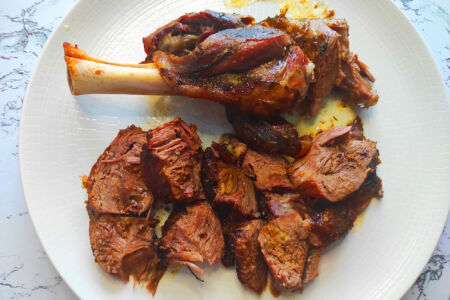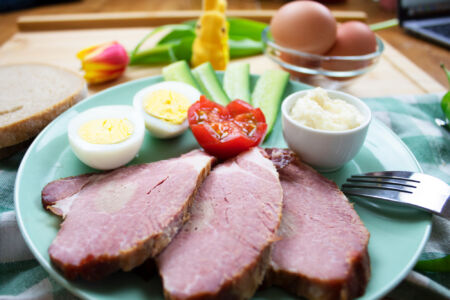Homemade Classic French Puff Pastry Dough Recipe
This puff pastry is used in pies, salt pastries, cremsnit (Krémes), vol au vent, mille-feuille and many other pastries.
What flour do we use for puff pastry? What kind of butter?
You will see how easy and fast this homemade puff pastry dough is! It will not cause you any technical problems. It is easy to handle and stretch, it is not sticky or brittle. The taste of this homemade puff pastry is sublime! Aroma… what more can I say? Pure butter.
In principle, this puff pastry is made of a simple dough (water, flour, salt) called ” détrempe ” and very greasy butter (min. 82% fat). No yolks, whole eggs, oil, lard, sugar or yeast. The puff pastry with yeast is used for croissants and has another recipe.
What Type Of Flour And Butter Are Used In Puff Pastry?
I used BL55 flour and Irish butter with 80% fat.
If you use 000 flour you will need less water. The optimal flour for confectionery contains between 8-11% protein (gluten). Butter should be removed from the refrigerator at least one hour before use. It must be mouldable but cool.
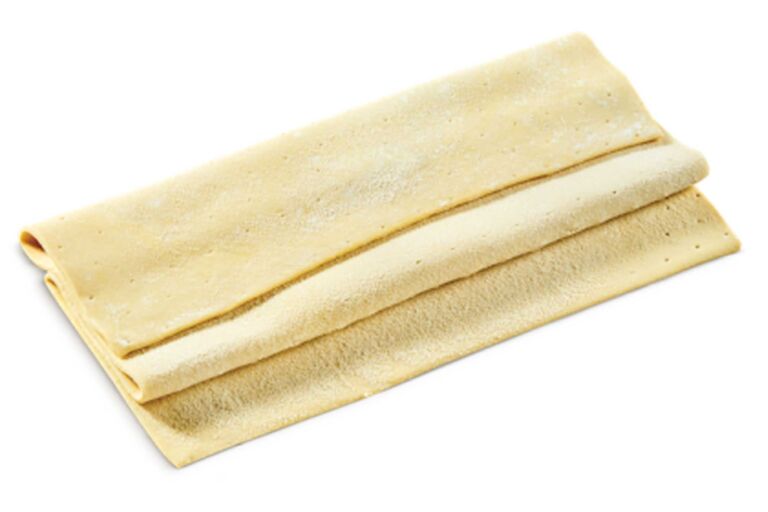
Homemade Classic French Puff Pastry Dough Recipe
| Prep time | Cook Time | Rest Time | Total Time |
|---|---|---|---|
| 180 min | - | 180 min |
How To Fold The Puff Pastry?
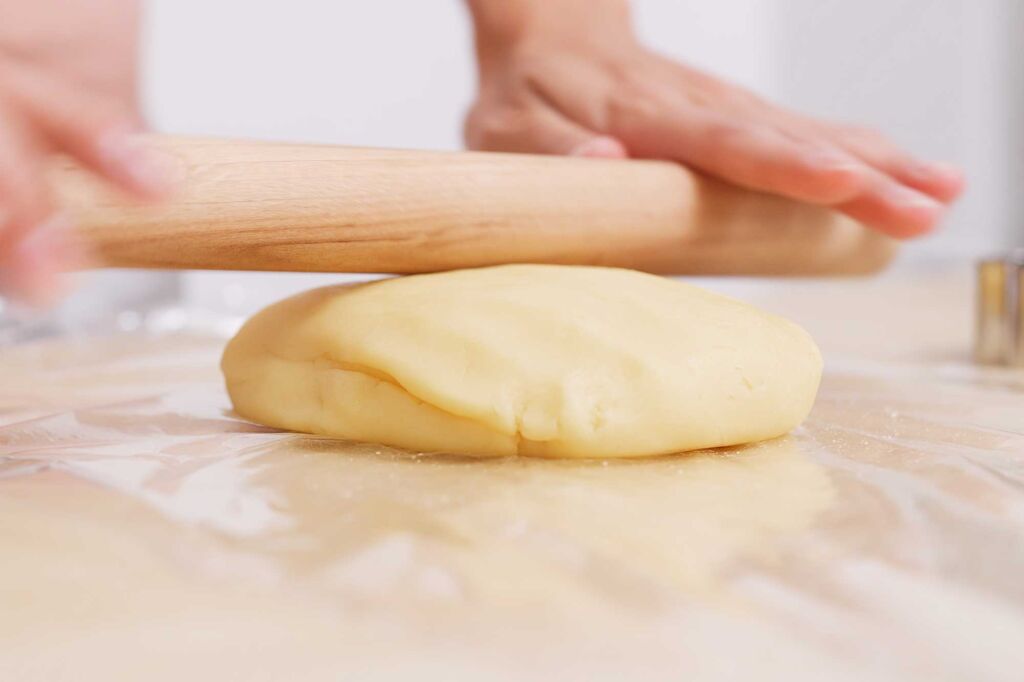
Here you will see that a puff pastry like a book contains a fixed 729 layers of butter – resulting in 6 successive packs / folds. There is also a calculation formula: 3 to the 6th power. The folds of the puff pastry are made exactly in 3 (not in 2 and not in 4). This type of folding is called “folding roll”.
After placing the butter and incorporating it in the dough, we have 1 layer of butter, after the first folding we have 3, then 9, 27, 81, 243 and, finally, 729. Incredible… right?
A Little History
The Greeks and Arabs used puff pastry (made with oil). It was brought to France and Austria by the Crusaders. It is the origin of many pastries that have been popular since the Middle Ages, such as strudel, baklava, pithiviers, and vol-au-vent. This puff pastry, on the other hand, was made “sheet by sheet” by simply superimposing successive layers of pasta and fat.
Puff pastry appears to have several origins, possibly Spanish via Arabic or Moorish and French influences.
Ingredients
Instructions
Place the flour in the stand mixer bowl. If you don’t have a stand mixer and want to make puff pastry from scratch, arrange the flour on your workbench in the shape of a fountain.
Add the salt and water (at room temperature).For a few minutes, work at medium speed. Once all of the flour has been incorporated, turn the dough out onto your kitchen worktop and shape it into a ball. The dough ball should be quite compact.
If you don’t have a mixer, gather the flour with your fingers by drawing it into the water until it’s all combined.
You will end up with a compact ball.Make a cross on the top of the ball with a knife. The dough is now complete. Refrigerate the dough ball for at least 30 minutes after wrapping it in cling film.
Rolling and folding
Flour your work surface and place the dough in front of you.
Squish the four corners of the ball with your fingers.
Maintaining the ‘cross’ shape, roll out the ball. The middle section should be thicker.Place the butter in the center (at room temperature).
Form the butter into a rectangle large enough to fit in the center of the dough.
Fold the dough’s top corner over the butter. Fold over the opposite side (bottom corner). Fold the right corner over, ensuring that the edges are sealed and straight.
Brush off any excess flour before folding the left corner over.Now that the butter is completely enclosed, pound the square with a rolling pin to incorporate it into the dough.
Make certain that the square shape is maintained. Roll out the square lengthwise, being careful not to let the butter escape.
Form the dough into a long rectangle with a 1cm thickness.
Turn the dough anti-clockwise for a quarter-turn. If necessary, flatten the corners.
Fold the dough into three equal parts. Begin by folding the right third over, followed by the left third.
Check that the edges are sealed and regular.Roll out the pastry again, this time lengthwise. Fold the dough into thirds again after a quarter-turn (anticlockwise).
Begin by folding the right third over, followed by the left. Check that the edges are sealed and regular.
Make a mark in the dough with two fingers. This indicates that the dough has been folded twice.
This simple tip is to always remember how many times the dough was folded in case you want to continue folding later. Wrap the dough in plastic wrap and place it in the refrigerator for at least 30 minutes.
The first two folds have now been completed.
Puff pastry must be folded six times.Place the ball on a floured surface. Roll out the pastry lengthwise. Give the dough a quarter-turn (anticlockwise).
Important: Whether you’re going clockwise or anticlockwise, always go in the same direction.
Fold the dough into three parts.
Begin by folding the right third over, being sure to brush off any excess flour. Then fold the left third over.
Make certain that the edges are sealed and regular.Roll the pastry out again lengthwise. Give the dough a quarter-turn (anticlockwise) and fold it into three parts.
Begin by folding the right third over, then the left.
Make certain that the edges are sealed and regular.
Make a mark in the dough with your four fingers. This means the dough has been folded four times.Wrap the dough in plastic wrap and place it in the refrigerator for at least 30 minutes.
The first four folds have now been completed. There are two more folds left.Place the dough on a floured surface and roll it lengthwise.
Make a quarter-turn with the dough (anticlockwise). Fold the dough into three equal parts.
Begin by folding the right third over, followed by the left.
Check that the edges are sealed and regular.
Roll out the pastry again lengthwise.
Give the dough another quarter-turn (anticlockwise) and fold it into thirds.Begin by folding the right third over, followed by the left third.
Check that the edges are sealed and regular.
Make a mark in the dough with six fingers. This indicates that the dough has been folded six times and that the folding process is complete.The pastry is now finished and ready to use. Wrap the dough in cling film and place it in the refrigerator for at least 30 minutes before baking.
Puff pastry can be kept in the fridge for up to 3 or 4 days and in the freezer for several weeks. Wrap it in cling film to keep it in good condition.
You can use homemade puff pastry for a variety of purposes.
Although puff pastry takes a long time to make, it is not difficult if you follow the above instructions carefully.I guarantee you’ll never go back to store-bought puff pastry again!
Enjoy, Good Appetite!
